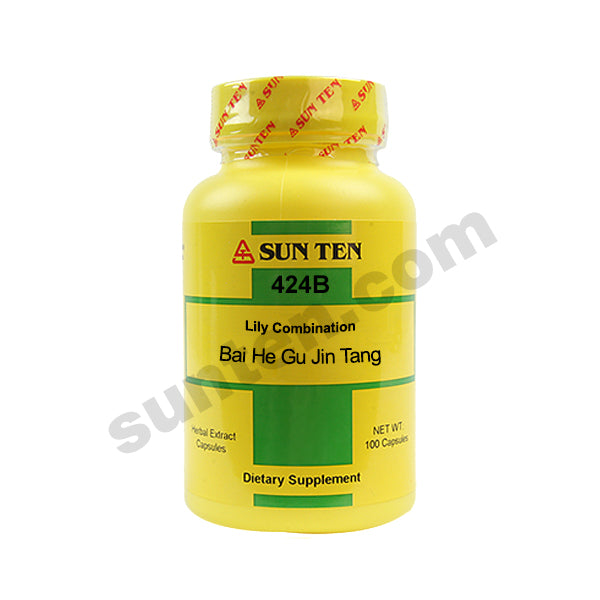Bai He Gu Jin Tang
Lily Combination Capsules | 百合固金湯
Practitioners: Please LOGIN to view the wholesale price. This item can only be purchased by a licensed practitioner. Find a practitioner
SKU 424B
✅ Vegetable Capsule
Ingredients: Brown lily bulb (bai he), Ophiopogon root (mai men dong), Cooked rehmannia root (Shu di huang), White peony root (bai shao), Scrophularia root (xuan shen), Rehmannia root (Sheng di huang), Fritillaria sichuan bulb (Chuan bei mu), Chinese licorice root (gan cao), Tang-kuei root (dang gui), Platycodon root (jie geng).
| Mandarin: 百合固精湯 Pin-Yin: Bai He Gu Jin Tang English: Lily Combination Korean: 팔정산 Romaji: Byakugo Kokin To Kanji: 百合固金湯 Kampo: No |

